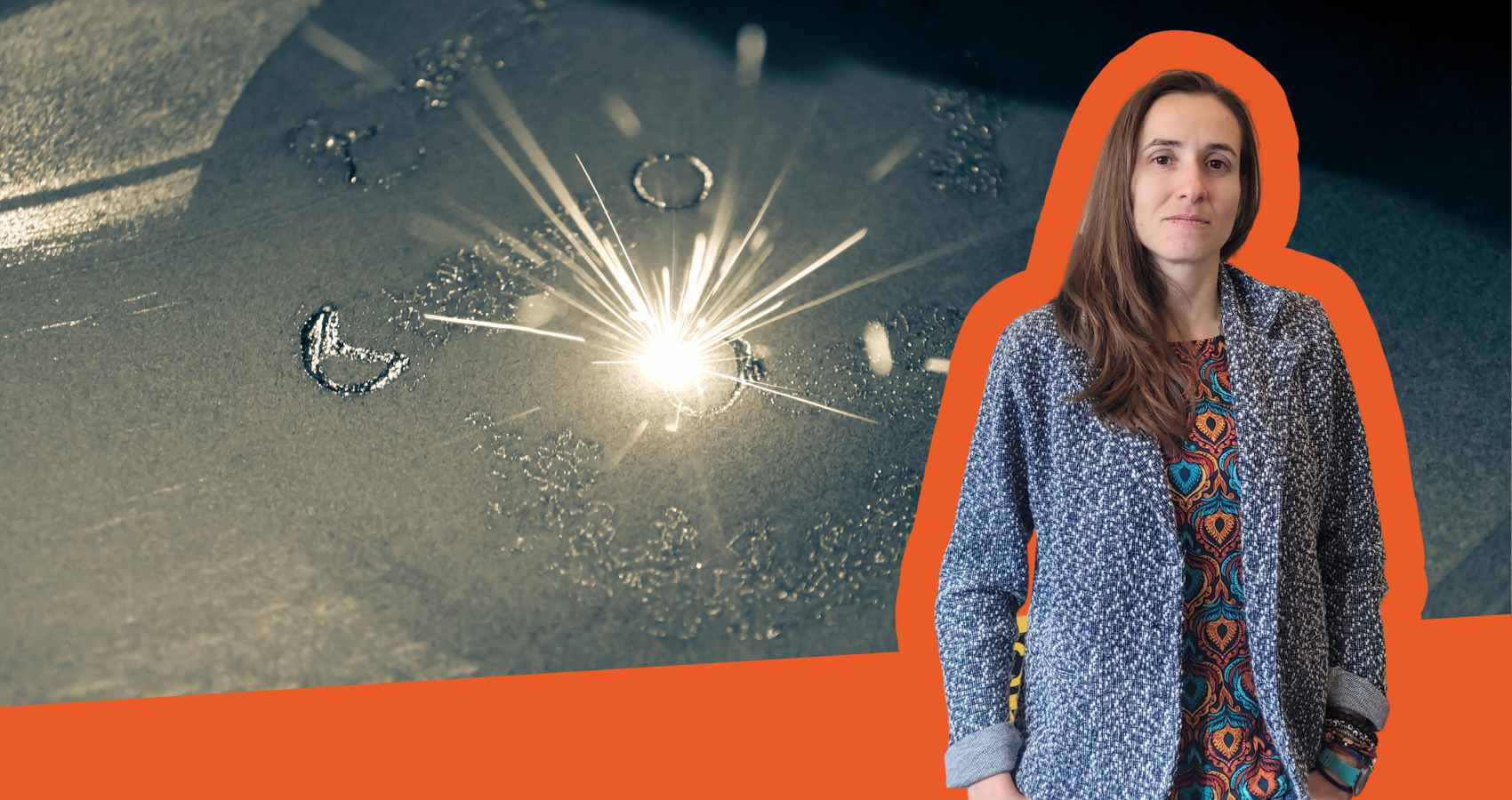

“I felt like something was missing, and that something was a period of study abroad. The opportunity came and paved the way for me to work as a researcher at one of the most prestigious American universities today.” These are the words of Elisa Torresani, an assistant professor at San Diego State University, who moved there seven years ago after completing her engineering studies at the University of Trento, from her bachelor’s degree to her PhD.
“At first, I didn’t think I would study engineering. I envisioned a future in the medical field, but things didn’t go as planned. So, I enrolled in ‘Food Industry Engineering,’ a three-year program that no longer exists, and I discovered that this field was the right fit for me,” Elisa recounts.
Her passion for materials began to emerge during this time. When it came to choosing her specialization, there was no doubt: materials engineering.
The spark that shaped her career as a student, and later as a researcher, came during her courses in metallurgy—specifically powder metallurgy, which she chose as the focus of her thesis. “My advisor was Professor Alberto Molinari, with supervision by Professor Cinzia Menapace,” says Torresani. “I decided to pursue my PhD with him.”
“Powder metallurgy refers to the techniques used in industry to transform metal powders into components essential for producing a wide range of products. Think about the tiny screws in eyeglasses or the mechanical parts in cars and airplanes,” Torresani explains. “The most classic of these technologies is sintering, which occurs after pressing powders into a mold to give them a specific shape. The material is then heat-treated, meaning it’s heated to a specific temperature that varies depending on the material. As the powders bond, they form the final component, which will have specific physical and mechanical properties based on its intended application.”
During this process, however, the object undergoes a size reduction that isn’t uniform.
“I studied this phenomenon, which, in technical terms, is called anisotropy. It refers to the variability in the physical characteristics or mechanical behavior of an object along certain directions (longitudinal, transverse, radial, tangential).”
What better opportunity to delve deeper into this phenomenon than going abroad?
“I wanted to try an experience outside Trento for a couple of months. Thanks to Professor Molinari, I got in touch with Professor Eugene Olevsky at San Diego State University, who offered me a six-month project. It felt like an eternity,” Elisa admits. “In the end, I stayed in the U.S. for seven months to complete some tasks. This experience enriched me both professionally and personally.”
Her relationship with Professor Olevsky and his team continued even after she left. Eventually, she received an offer to return to California for a postdoctoral position.
“I left in 2017, after earning my PhD and briefly collaborating with Professor Matteo Benedetti on an additive manufacturing project,” she continues. “Within three years, I was appointed assistant professor, which means I now combine research with teaching.”
In her research, Torresani continues to focus on sintering—not just of metallic materials but also ceramics. Her attention is on additive manufacturing, particularly a type of 3D printing called binder jetting. “We’re trying to understand how certain parameters considered during printing can affect sintering,” says Elisa. “In this area, we have collaborative projects with UniTrento, especially with Professors Alberto Molinari, Ilaria Cristofolini, and Marco Zago.”
In terms of teaching, she handles courses like “Introduction to Materials Engineering” and “Mechanics of Materials” for undergraduates, as well as “Mechanics of Sintering” for master’s and PhD students.
“Teaching is very demanding, especially compared to Italian universities. Here, in addition to midterm and final exams, students are assigned homework to keep them engaged. American universities are very expensive, and many students work to pay for their studies. Therefore, they’re given the opportunity to ease the burden of final exams with continuous assessments,” Torresani explains. “The education here emphasizes practical aspects, unlike in Italy, where the focus is on theory. There are many lab activities and group projects, which provide opportunities to learn how to work collaboratively.”
It’s not an easy job, but there are plenty of rewarding moments.
“What I love about my profession is understanding things, no matter how small, and being there for the students. It’s wonderful to see them gradually become independent and know that you’ve played a key role in their development,” says the former UniTrento student. “The energy I put into teaching is also repaid by student evaluations, which have always appreciated my methods. This feedback is important because it impacts career advancement.”
When asked if she’d like to return to Italy, Elisa is cautious.
“Yes, but not in the short term,” she concludes. “I still have many things to accomplish there—various projects, as well as students and PhD candidates who depend on me financially. Besides, I see that the challenges are helping me grow a lot. It wouldn’t make sense to leave right now, just as things are getting exciting.”